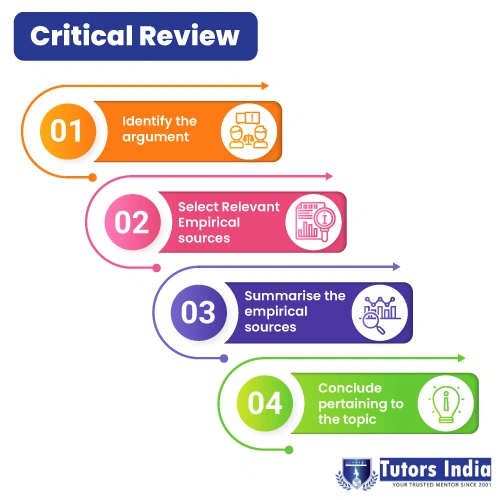Database Management Systems and its Impact in the Workplace – Critical Review For Computer Science UK Dissertation
Background of Database Management Systems
Database management systems (DBMS) is deemed as a software tool that is utilized to develop and manage one, or more than one databases, while providing an easy way to develop databases, update tables, retrieve information and improve the overall data quality. DBMS can be considered as a system through which data is accessed, altered and secured, with a view to restrict any conflicts from emerging (Friedrichs, 2017). The tools presented by DBMS are also beneficial for administering the schema of a database, which tends to dictate the database structure in itself. In several instances, the database management system can only be observed by the database developer, as the developer would develop a different front-end for the end user. This front-end could be rather technically defined as a DBMS system on its own nonetheless, there is a high probability that it would also be popularly known as a customer relationship management (CRM) tool (Praveen et al., 2017).
Critical Review on Types of Database Management Systems
Database management systems are of several types. This section attempts to critically review a few of the DBMS systems.
Relational Database Management System
The relational DBMS model had been proposed by E. F. Codd (a researcher at IBM). Codd presented a theoretical paper for the model. According to Codd, with the help of a relational database, data is presented in a tabular format. Accessing such a database did not need any algorithm however; it required the use of non-procedural high-level language (Praveen et al., 2017). Nonetheless, a relational database is wrought with challenges. First and foremost, it is complex in its structure, it does not provide any scope for scalability, and is also challenging to execute maintenance on it (Verma et al., 2021).
Flat Database Management System
A flat database management system refers to a simple DBMS wherein every database is projected through a single table, wherein each and every record is stored as a single array of data. This data arrays are segregated with the help of delimiters like commas or tabs. The table is generally stored and physically projected in the form of a simple text file (Carneiro, 2020). As opposed to relational databases, there is no way that flat databases can project intricate associations amongst entities. Further, it also does not offer the scope for enforcing constraints amongst data (Paper, 2022). For example, in a flat database at use within a commercial bank, it would make sense to ensure that, while creating the database, a new account is associated with an existing customer. In relational databases, it is possible to do this with ease by taking into account the concept of foreign keys, to make sure that IDs of customers are duly filled at the time of creating an account and also that the said ID already exists within another table.

Different Levels of Database Management Systems
DBMS have three key levels and it would comprise of external, internal and conceptual levels. The external level is also known as the view level simply because of the fact that it allows many users to view their data through this level, which tends to be internally retrieved from the database. This is facilitated with the help of internal and conceptual level mapping (Bellatreche et al., 2018). The conceptual level is also popularly known as the logical level as the entire design of the database like relation between data, data schema, have been described within this conceptual level (Bellatreche et al., 2018). Finally, the internal level in DBMS is also termed as the physical level. This level is instrumental in elucidating the way in which data storage occurs within storage devices. The significance of this level lies in the fact that it is responsible for space allocation and this is the lowest level within DBMS architecture (Bellatreche et al., 2018).
Workplace Database
Businesses in the current day are known to be run on databases. Such organized information repositories are capable of storing almost all types of data, and such information can be sorted to be delivered to the end-user with a simple mouse-click. DBMS within businesses enable business owners and management to organize and track their customers, employees and inventories. Prominent databases that are known to exist within current workplaces include; customer relationship management database, inventory management database, payroll system, and business data analytics (Anbuoli & T.R.Thiruvenkatraj, 2013).
Impact of DBMS in the Workplace
Several organizations depend on rigorous recruitment, updating and information tracking. In recent times, such information is utilized to confirming comments from accounting and reporting receipts and estimates. Employees acquire information by leveraging the database tools and one of the most obvious ways to track transfers within diverse parts of the database is to utilize a database linked with the management system (Lee et al., 2017). Such useful long-distance database enables new information to be entered through the board, update currently existing records, while removing any obsolete data.
Benefits of DBMS
Benefits from using a DBMS at the workplace are several. To start with, it helps long-drawn procedures to be simplified, it helps secure data at a common place (prevents data from being scattered at different places in hardcopy files) and any information that is required can be easily retrieved. In addition, data that is stored on a DBMS is secure and can only be accessed by authorized personnel.
Conclusion
From a general standpoint, database systems are supposed to bring in ease to day-to-day operations. Databases enable an organization to retain information that is required during the daily functioning. Database management systems can thus be instrumental in lowering costs and smoothening the overall operations at an organization.
About Tutors India
Tutors India is a leading organization that provides academic research services. The key purpose of the organization is to provide academic support to students in UK who would be required to develop their computer science UK dissertations or UK assignments which would be an integral part of their coursework. Tutors India has a team of experts who are proficient and professionals from the domain of computer science and they would be in a position to help students with their computer science UK assignments or UK dissertations on the said topic.
References
- Anbuoli, P., & T.R.Thiruvenkatraj. (2013). a Study on Customer Relationship Management. International Research Journal of Business and Management – IRJBM, 5(March), 1–10.
- Bellatreche, L., Valduriez, P., & Morzy, T. (2018). Advances in Databases and Information Systems. Information Systems Frontiers, 20(1), 1–6.
- Carneiro, J. (2020). A Review on Tools for Teaching Database Systems Online Challenges in Learning Database Systems Tools for Learning Database Systems. Edição, 8(1), 1–5.
- Friedrichs, P. (2017). Development of a Rare Earth Element Resource Database Management System.
- Lee, H., Han, E., Kwon, N. ji, Kim, Y., Kim, S., Kim, H., & Min, S.-G. (2017). Korean Rural Development Administration’s web based food and nutrient database management and validation system (NutriManager) – A report. Journal of Food Composition and Analysis, 62, 231–238.
- Paper, C. (2022). AtlantoCracies : From Relational to Document-Oriented Databases Bilbao , Spain , 23-25 June 2022. June.
- Praveen, S., Chandra, U., & Ali, A. (2017). A Literature Review on Evolving Database. International Journal of Computer Applications, 162(9), 35–41.
- Verma, O. S., Chaudhary, I., & Chaudhary, A. K. (2021). A comparative study of relational database management system and object oriented database. 9(4), 3493–3497.

 Next Post
Next Post